Are you considering adopting a Dalmatian but unsure about how to care for it? In today’s article, we will provide you with information about the breed’s origin, characteristics, care, and price, to help you become a responsible owner.
1. Understanding the Dalmatian Breed
Origin of Dalmatians
 Dalmatian, a beloved dog breed
Dalmatian, a beloved dog breed
The Dalmatian, or Dalmatinac, was first discovered in the Dalmatia region of Croatia, with some researchers believing that their ancestors were the large Great Dane dogs.
While Dalmatians may inherit the aggressive nature of hunting dogs, they have been bred and domesticated over the years, resulting in a gentler and more friendly temperament.
Classification of Dalmatians
 Purebred Dalmatians
Purebred Dalmatians
Dalmatians are classified based on their purity, specifically:
Purebred Dalmatians
Purebred Dalmatians are born to purebred parents, without any crossbreeding, and possess all the distinctive traits and qualities of their ancestors. They are typically sold at a higher price compared to mixed breeds.
Mixed-breed Dalmatians
Mixed-breed Dalmatians are quite popular due to their unique appearance and temperament. They are created by crossing a purebred Dalmatian with another breed of dog. Some of the mixed breeds found in Vietnam include:
- Dalmatian mixed with Labrador Retriever
- Dalmatian mixed with German Shepherd
- Dalmatian mixed with Husky
- Dalmatian mixed with Phu Quoc Ridgeback
- Dalmatian mixed with Beagle
- Dalmatian mixed with Poodle
Coat Colors of Dalmatians
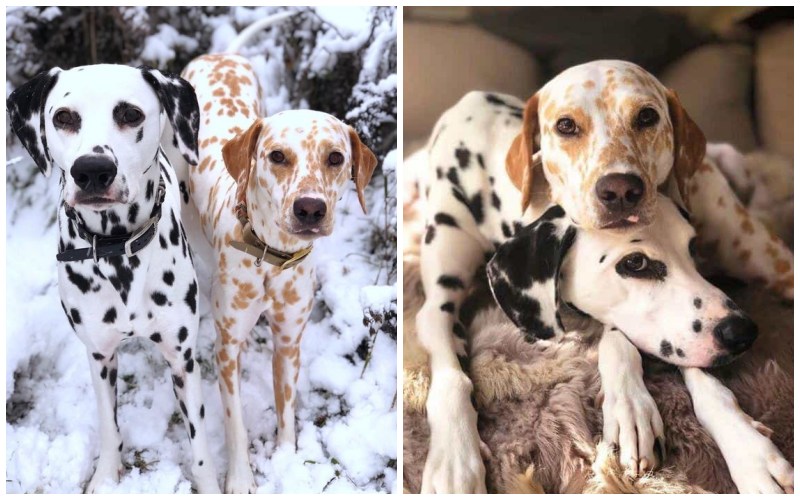 Dalmatian with black or brown spots
Dalmatian with black or brown spots
Dalmatians are known for their short coats, predominantly white with black spots, which is their distinctive feature. However, some Dalmatians may also have brown, chocolate, or gray spots, and there are even variations with black coats with white spots or completely white coats.
It’s worth noting that newborn Dalmatian puppies may only have white coats, and the spots may not appear until they are older. On average, these spots have a diameter of 30-60mm.
Physical Characteristics of Dalmatians
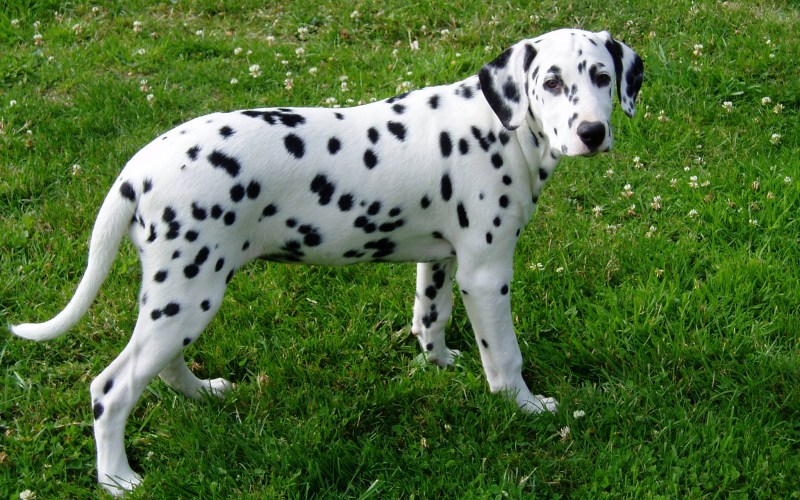 Dalmatians have a medium build
Dalmatians have a medium build
Body
Dalmatians have a medium build, standing 56-61cm tall and weighing 15-32kg. Specifically, adult males are taller, reaching 58-61cm and weighing 15-32kg, while adult females are slightly smaller at 56-58cm and 16-24kg. Male Dalmatians generally have more impressive physiques and superior strength compared to their female counterparts.
In terms of body proportions, Dalmatians have a slim build with a deep and broad chest, giving them a robust appearance, while their stomach and waist are tucked in, creating a sleek and muscular look. Their legs and back are long and straight, with round, elastic pads and white or spot-colored nails.
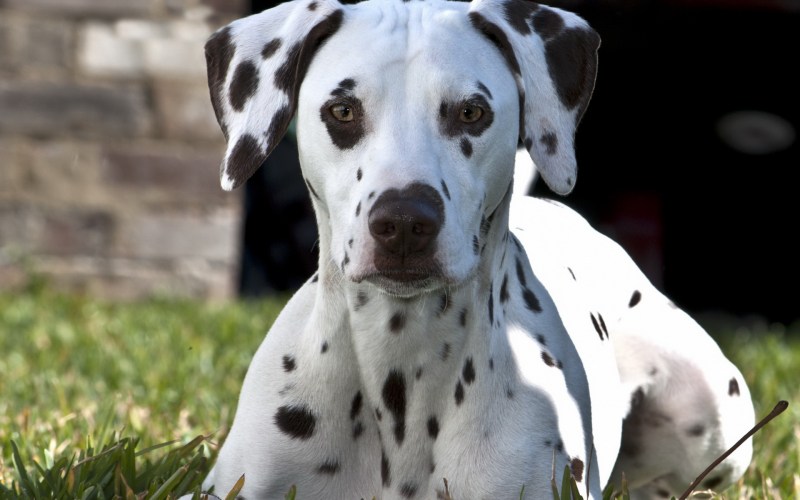 Dalmatians have small eyes
Dalmatians have small eyes
Head
Dalmatians have a moderately sized head, with a long and square muzzle, a large nose, and small eyes that can be brown, blue, or amber in color. They possess an extremely strong and sharp jaw, and their lips rarely hang loose. Their ears are thin, long, and droopy.
Notably, Dalmatians have exceptional hearing, capable of detecting sounds from several kilometers away.
Temperament
 Dalmatians are highly energetic
Dalmatians are highly energetic
Loyalty
Dalmatians are incredibly loyal and obedient to their owners. They make excellent pets, but they can also be trained as guard dogs or fire dogs. Showing your Dalmatian love and care will make them even more lovable and obedient.
Energetic and Friendly
Descended from hunting dogs, Dalmatians are always full of energy and love to run, jump, and play without getting tired. They can reach speeds of up to 60km/h when running.
Dalmatians also enjoy playing with children and are generally friendly. However, they may occasionally show a lack of patience and play too rough, so it’s best to only allow them to play with children who are old enough to understand gentle play.
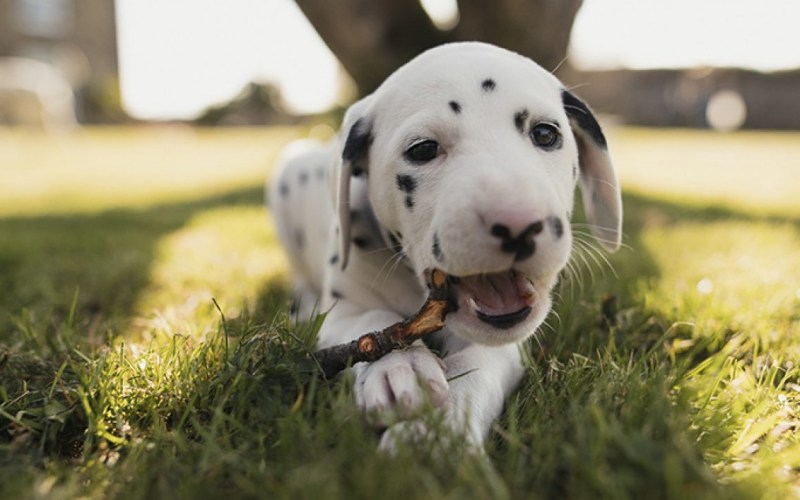 Dalmatians can get sad if not entertained
Dalmatians can get sad if not entertained
Good Memory and Alertness
Dalmatians are highly intelligent and have an excellent memory. They will remember all your actions and gestures, whether they are rewarding or punishing. Therefore, it’s crucial to never mistreat or be cruel to your Dalmatian as they will remember it.
Bravery and Courage
Dalmatians are brave and courageous, always ready to protect their owners in dangerous situations. They have a history of serving as excellent bodyguards and firefighters during wartime.
Behavior and Instincts
Due to their high energy levels, Dalmatians can easily become sad or restless if not entertained or if they feel ignored by their owners. Therefore, it’s important to take them for daily walks to relieve their pent-up energy and provide mental stimulation.
Dalmatians reach maturity relatively late compared to other dog breeds. For example, male Dalmatians are ready for mating at 25-28 months of age, while females become mature at 20-22 months. A female Dalmatian can give birth to a litter of 9-13 puppies.
Reasons to Own a Dalmatian
 Dalmatians are adorable companions
Dalmatians are adorable companions
Here are some compelling reasons why you should consider owning a Dalmatian:
- Dalmatians are incredibly loyal to their owners and will only obey them.
- Dalmatians view their owners as part of their pack and will protect them at all costs.
- Dalmatians love to run, jump, and play, bringing joy and laughter to their owners, especially children.
- Dalmatians are friendly towards children, people, and other pets.
- Dalmatians are alert and have a good level of vigilance, making them excellent watchdogs.
2. Caring for Your Dalmatian
Feeding Your Dalmatian
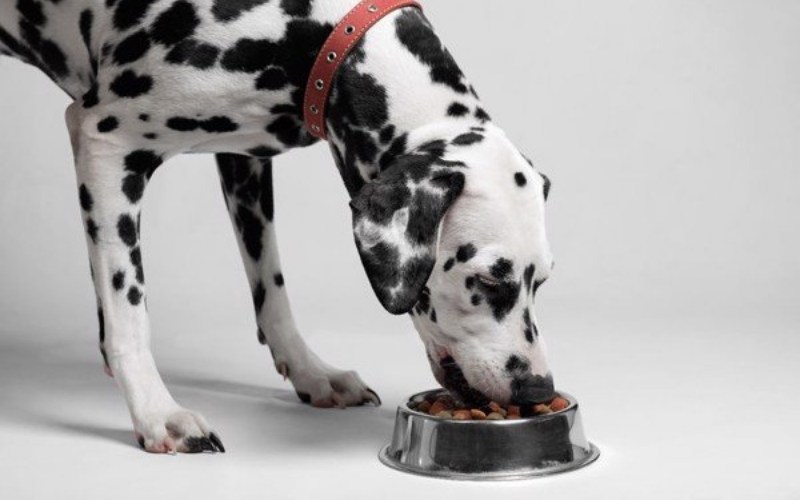 Dalmatians can be fed dry or wet food
Dalmatians can be fed dry or wet food
Dalmatians can be fed commercial dog food or a natural diet. If choosing commercial food, select a brand that is suitable for their breed, size, and age. For a natural diet, prepare meals using fresh, high-quality ingredients, and cook them properly.
Some recommended food items to include in your Dalmatian’s diet are:
- , dairy products such as , ,… (should not exceed ¼ of their total diet)
- various vegetables, including , , , sweet potatoes, and (should not exceed 20% of their total food intake).
- Lean meats and organ meats (2-3 times a week)
- Frozen seafood and freshwater fish with bones removed (1-2 times a week)
- Fresh fruits
Some foods to limit or avoid in your Dalmatian’s diet are:
- Sweet, salty, spicy, and highly seasoned foods, as well as fatty meats.
- Plant-based foods containing .
- Certain grains, including manna, , , and barley.
Nutritional Requirements at Different Life Stages
 Feed your Dalmatian according to their age
Feed your Dalmatian according to their age
The nutritional needs of your Dalmatian will change as they grow, so it’s important to adjust their diet accordingly:
Under 2 months old
At this stage, your puppy’s digestive system is still developing, so avoid feeding them hard or raw foods. Stick to soft porridge and milk if needed, and avoid giving them too many treats to prevent digestive issues. It’s best to feed them 5-6 small meals a day.
2 to 6 months old
This is a critical period for your puppy’s development, so supplement their diet with specialized milk powder to ensure they get all the necessary nutrients. You can also introduce canned dog food and meat porridge at this stage, and feed them 3-4 meals a day.
Over 6 months old
Dalmatians over 6 months old are considered adults and can be fed a varied diet of lean meats, vegetables, fruits, and raw foods. At this stage, you can reduce their meals to 2 meals a day.
Grooming and Hygiene for Dalmatians
 Bathe your Dalmatian regularly
Bathe your Dalmatian regularly
Living Environment
Dalmatians are active and energetic, so they need daily exercise to release their energy. It’s best to provide them with a spacious yard or garden to play in, but if you live in an apartment or don’t have outdoor space, make sure to take them for regular walks to prevent restlessness and provide mental stimulation.
Coat Care
Dalmatians have short coats, so they don’t get too dirty, and you can bathe them about once a month or as needed. After bathing, use a specialized comb to brush their coat and thoroughly dry it with a hairdryer to prevent hair loss and skin infections.
Hygiene Care
- Eyes: Use a soft cloth or cotton ball dampened with eye cleaning solution to gently wipe around the eyes and eyelids.
- Nose: Rinse the outside of the nose with water, and then use saline solution to clean the inside of the nostrils thoroughly.
- Ears: Gently wipe the ears with a soft cloth to remove dirt and check for ticks and fleas.
- Paws: Carefully inspect the pads and between the toes for any ticks or fleas and remove them.

































